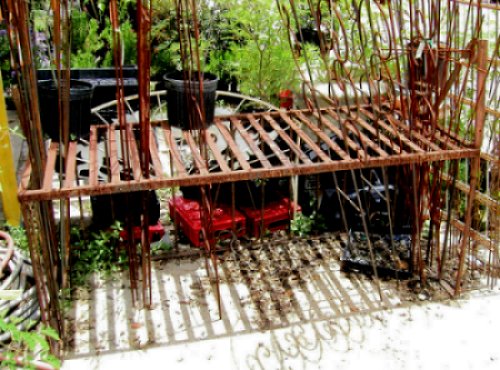Fire Escapes
Today, fire escapes. The University of Houston's College of Engineering presents this series about the machines that make our civilization run, and the people whose ingenuity created them.
We all know and use the term fire escape. Of course it can mean many things, but, when we hear it, we think of exterior iron ladders, with platforms at each window, down the side of a building.
We think of those iron ladders, but we see very few of them today. Outside of action movies and love stories, where they continue to make fine props, the fire escape had a rather short life.
We began building upward in the mid-nineteenth century. Six and seven-story office buildings and tall tenement houses came before the creation of elevator-served, steel-framed skyscrapers. Many of those old buildings had only one open wooden stairwell. When there were stairwell doors, they often opened inward.
Historian Sara Wermiel tells how, when catastrophic fires reached those buildings in the 1870s, state legislatures finally enacted laws requiring means for getting people out.
All this meant new technology, and what means were devised! Elementary: equip each upper room with a long rope. Fantastic: a hat-like parachute, anchored under the chin, and boots with highly elastic soles. Practical: canvas escape chutes, like those used on jet airplanes today. Rube Goldberg: a rope and pulley system that let a person lower herself in a canvas seat.
The familiar American 'skeleton' fire escape finally emerged. And that artifact has become as familiar as the farm windmill or the railroad depot. Yet where are they? Here in the young city of Houston, fire escapes are very hard to find. You'll do better looking for them in older towns — New Haven or St. Paul.
In fact, they have many huge shortcomings. Fires come out windows in floors below the one you're on. They invite traffic jams. The final ladder, raised above street-level to thwart thieves, very often jams when you reach it. And, despite that ladder, fire escapes can provide unwanted access into buildings.
The beginning of the end for the old iron fire escape was New York's terrible Triangle Shirtwaist fire where 145 garment workers died in 1911 as their ten-story factory building burned. Many died on fire escapes as flames billowed up from the windows below them. Fire escapes melted and buckled, dropping people to their deaths.
Today's solution is the closed, insulated stairwell, protected by fire doors that keep smoke from getting in. That's a still-evolving technology. But it's one that saved countless lives before the burning World Trade Center towers finally collapsed. Indeed, a new development is a closed stairwell built outside the building itself, as a kind of enclosed fire escape.
Yet the old iron fire escape remains engraved upon our minds as a wonderfully durable American icon. It's where we imagine sitting with a good book, high above the streets. It's where the gunman escapes, or gets caught. It seems astonishing that that's all in my mind. I can't remember ever having actually climbed on one.
I'm John Lienhard, at the University of Houston, where we're interested in the way inventive minds work.
(Theme music)
S. A. Wermiel, No Exit: The Rise and Demise of the Outside Fire Escape. Technology and Culture, Vol. 44, No. 2, April 2003, pp 258-284.
An afternoon spent driving about Houston looking for a good example of the "familiar" fire escape yielded this one ghostly remnant -- a short modified version of one,

and this upside-down platform from a dismantled American "skeleton" fire escape, which was being used as a stand at Joshua's Native Plants and Garden Antiques, 502 W. 18th St., Houston:
